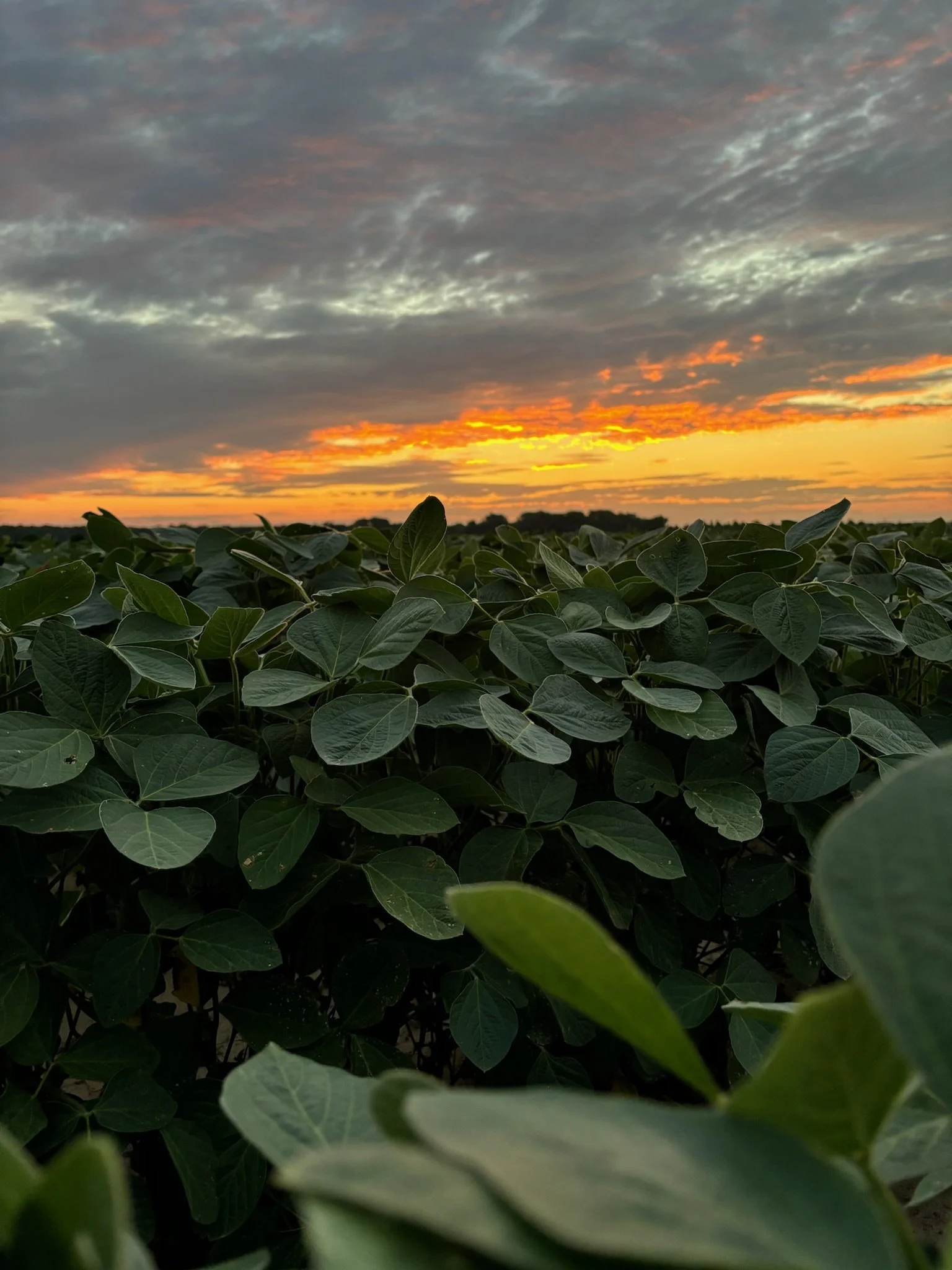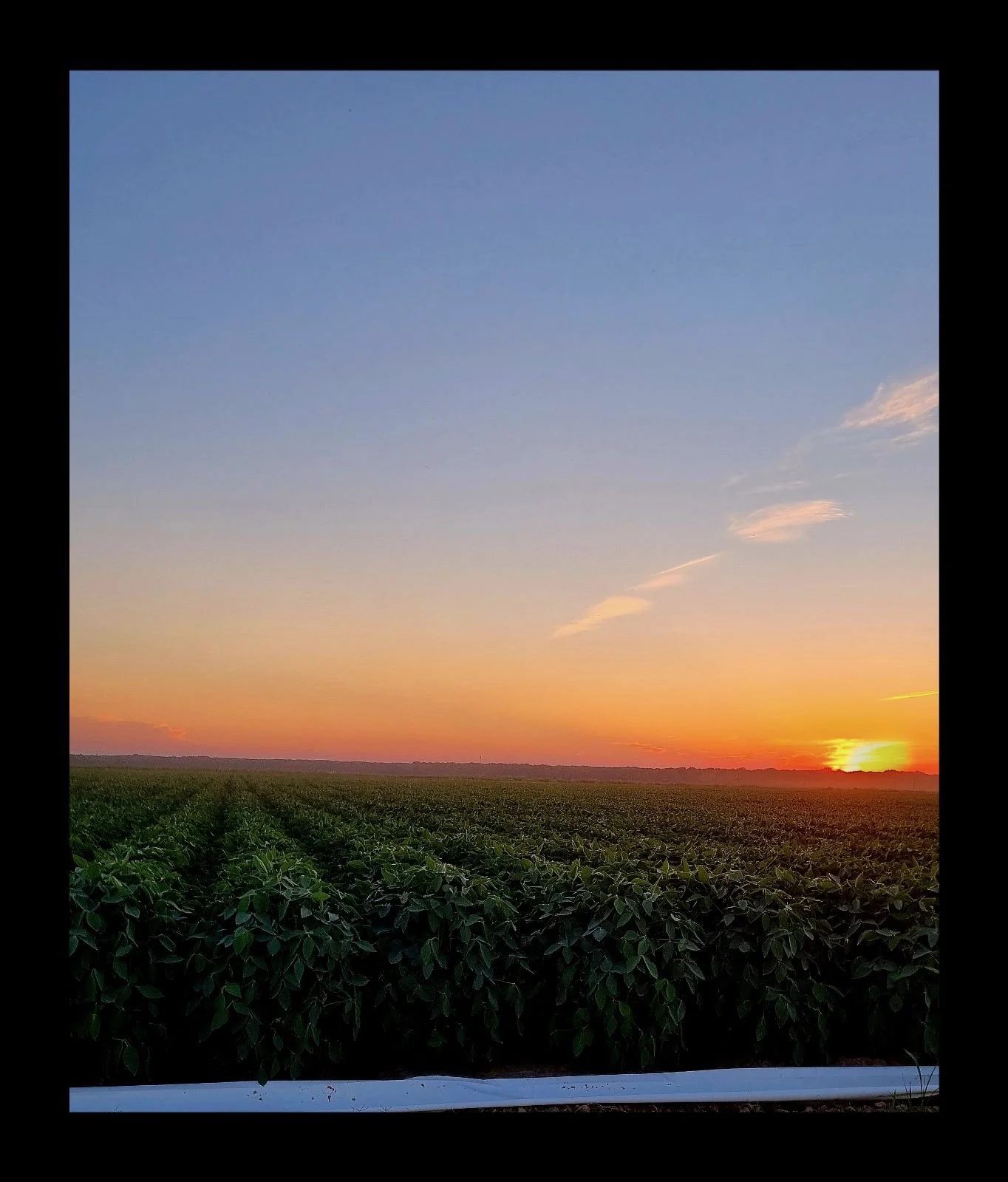July Crop Update: From Fields to Financials
The sun sets as recycled irrigation water returns to our reservoir to be used again.
As the calendar turns to July 1, we are beginning to see the crops mature and begin to make grain. Heads of rice are popping out of the rice plants across the farm. The corn is filling up the ears and harvest is not far away. Pods and soybeans are forming on the early maturing soybeans and blooms are not far away on our natto food soybeans. We are in full irrigation season here in Arkansas. All the poly pipe has been laid in the row irrigated fields and thankfully on our farm we have converted to almost all row watering and only 2 center pivot fields. This makes irrigation scheduling easier to divide up within the crew and conquer. Of course, we will take a good Fourth of July rain! Maybe the forecast will help us out.
UPDATE: We did receive a nice rain over the holiday weekend with the possibility of more to come from Beryl this week.
With field work a little slower now is the time to review our crop plan- did we get the acres planted that we hoped to for the 2024 crop season? This almost never happens so we must review and adapt other things like budgets, cash flows and marketing plans. By the first of August we should be able to make yield assessments on our fields and try to project if our actual yields will meet the estimates we used at the beginning of the season. Although this is very difficult to do accurately, with decades of yield data on the farms we operate we can get a good idea.
I take those yields and basically recalculate our cash flow and repayment capacity as well as other financial ratios to see where we may end up after harvest. Of course, in agriculture this is a moving target every day due to significant weather events that could come along and derail it all. Hurricanes for example are scary for rice farmers in the Mid-South and this hurricane season is already beginning. Not to mention the volatility of the markets that will influence whatever portion of the crop is not already priced. Mississippi River basis has been challenging this year as well. It has remained wider than normal and wider this early in the season than I can recall in recent years. What will the basis do? If you have comments on that please share!
Using spreadsheets to evaluate changes in yield and prices as well as actual to date costs per acre help me predict how the year will turn out. I much prefer to be aware of these numbers than to be surprised. I have fine-tuned my spreadsheets to a point that I feel like I have a decent understanding of how the results may end up. But back to the weather and how that could change our outlook on yields quickly. This risk is one we cannot overcome. Late summer, I share these projections with our accountant and especially our lender. In this business, communication with all your partners is important. I believe if you know you will be short, or expect to be, the best time to let them know is ASAP!
Production agriculture has its ups and downs for sure. I am in the middle of my 30th crop and have seen the cyclical nature of this business over and over. The main thing it has taught me is that in the good years don’t spend all your profits because it will not be long before you will need those profits to pay for the shortfalls. I certainly do not have it all figured out and I know there WILL be surprises and disappointments. I believe this is a business that still rewards hard work and integrity.
I am curious how often do you examine your projections during the crop season? What do you look for as you review the data? How does it help you to manage your farming operation?


